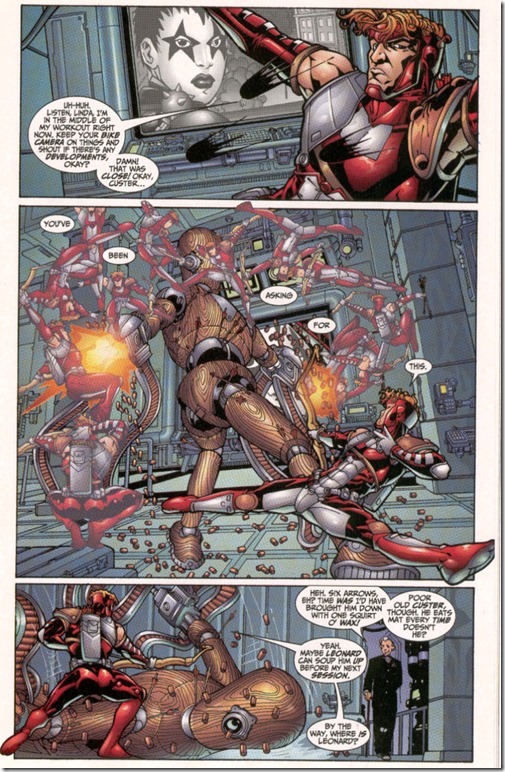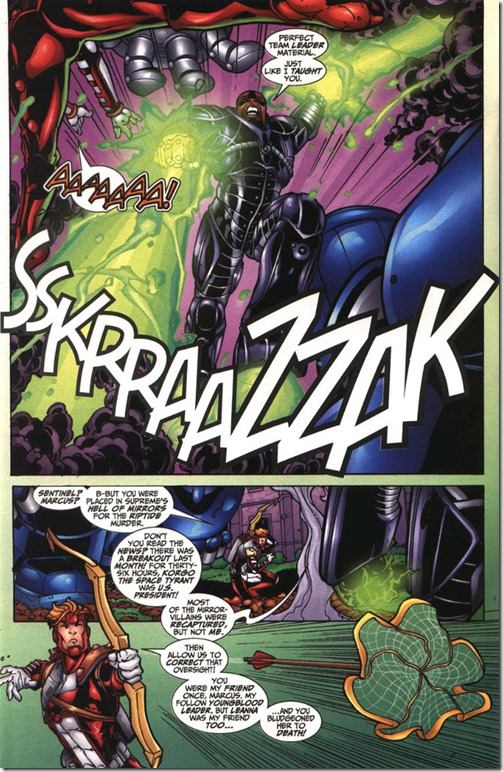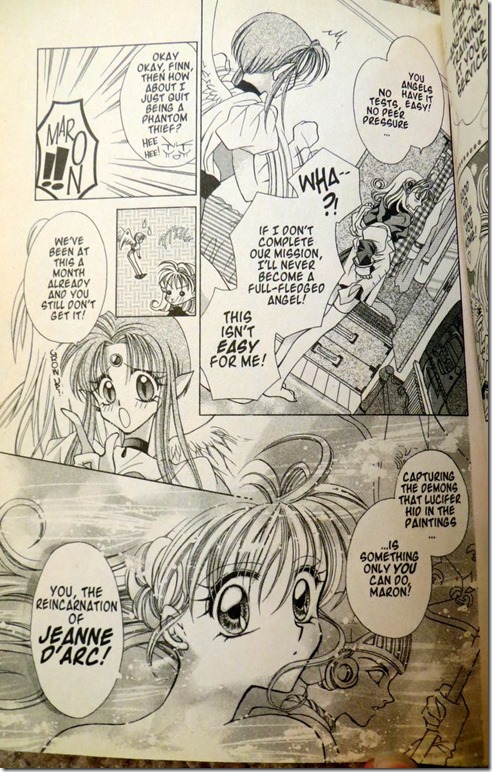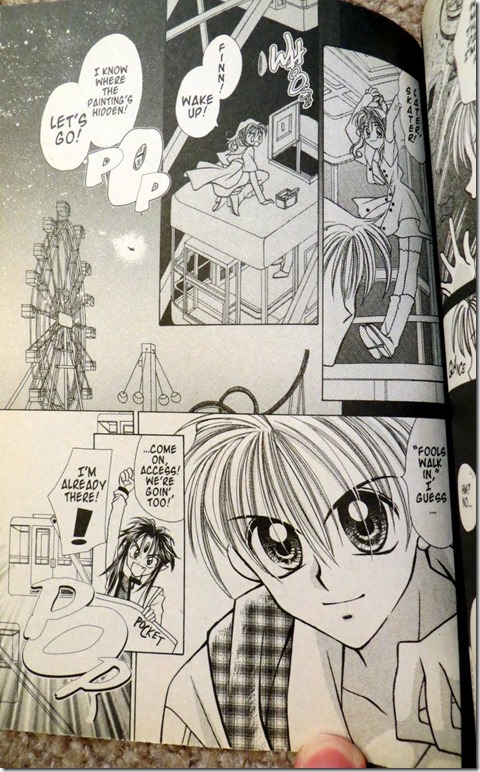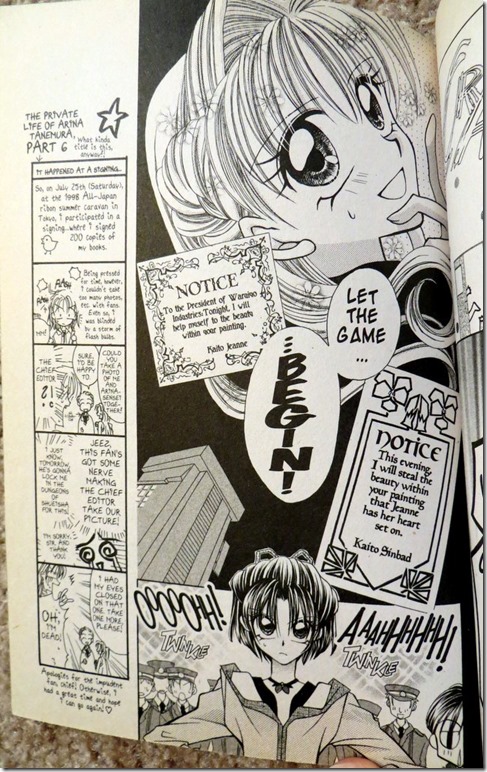Storytellers: Written by Paul Benjamin, art by Steven and Megumi Cummings
Publisher: Tokyopop
Year of Publication: 2006
Page Count: Around 160 pages
What I learned about Writing/Storytelling:
1. There’s some neat fatalism with a girl who is destined to have an arm cut off, which is a neat trope.
2. There’s some neat world building. The book takes a different approach from stories like Harry Potter, which set magic and mystery in the real world, but hidden from normal people. This just creates an alternate history (apparently) where god’s live out in the open.
What I learned about art/storytelling:
1. I am by no means a perfect reader, and some of the trouble could have been on my end, but, that said, I had trouble visually differentiating between some of the characters in this book.
It seems to me that the artists had some trouble differentiating faces:

The two boys are drawn with the same face and slightly different eyes, it seems to me.
One problem I had was thinking this character:

And this character:

were the same character, just with different clothing on. (There was a scene in a locker room, which could have implied she changed clothing).
Another thing I noticed when flipping through the book is that there are very few panels with all four heroes together. Sometimes that’s because the heroes were separated, but sometimes they were together but the artists didn’t draw them all at once.
For clarity’s sake, this book demonstrates that there seems to be an argument in favor of those splash images with the whole team in profile, so the reader can make sure they get how everyone looks in comparison to everyone else.
In a color book, they could differentiate the look of the characters more through hair color or skin tone. As this is black and white, they could have used things like hats, hair accessories, and hair styles, as well as facial shapes.
Recommendation: D+
Notes/Reviews/Synopsis:
I wasn’t sure whether to give this a C- or D+. There’s actually some good stuff here, but it doesn’t seem to jell together as well as it should. One symptom is the dramatic, climatic fight scenes where we have up-skirt panty shot of one of the girls (a daughter of a God of War, no less) as she engages in the fighting. It seems like that art choice played against the story drama. Overall, I think my muddled confusion of trying to distinguish some characters prevented me from getting into the plot.
Additionally, things felt a little too hectic and busy:I think I’d prefer if they told the story with less scenes but gave the remaining scenes more time to breath.
To be honest, I suspect I may be a little too harsh on this book, which was solid in many ways… but since I didn’t enjoy it as I was reading it I’m giving it the D+.
